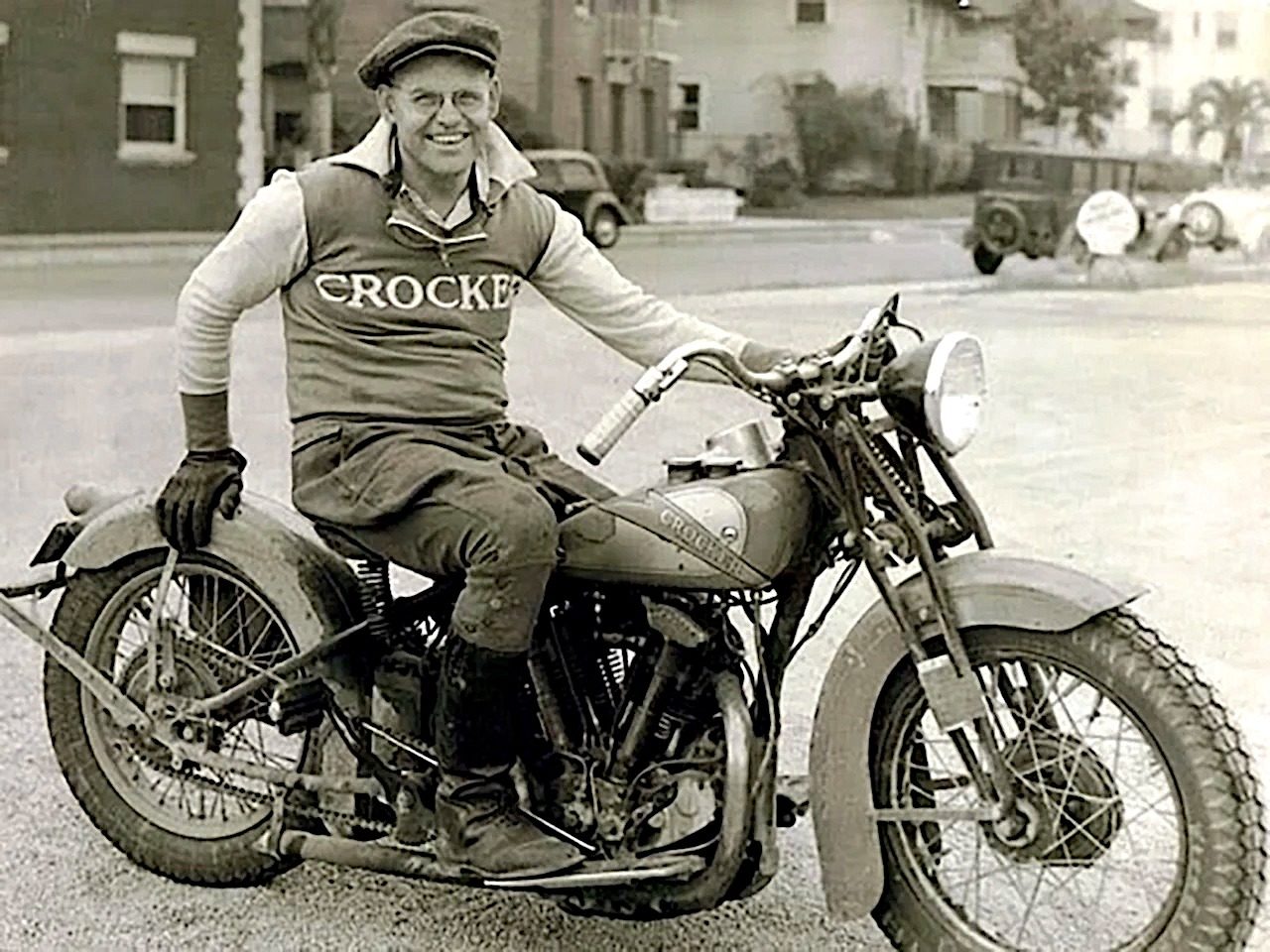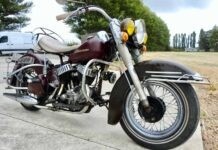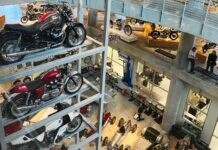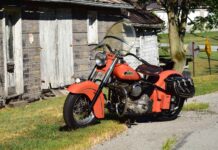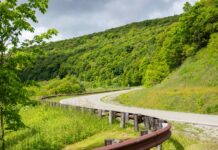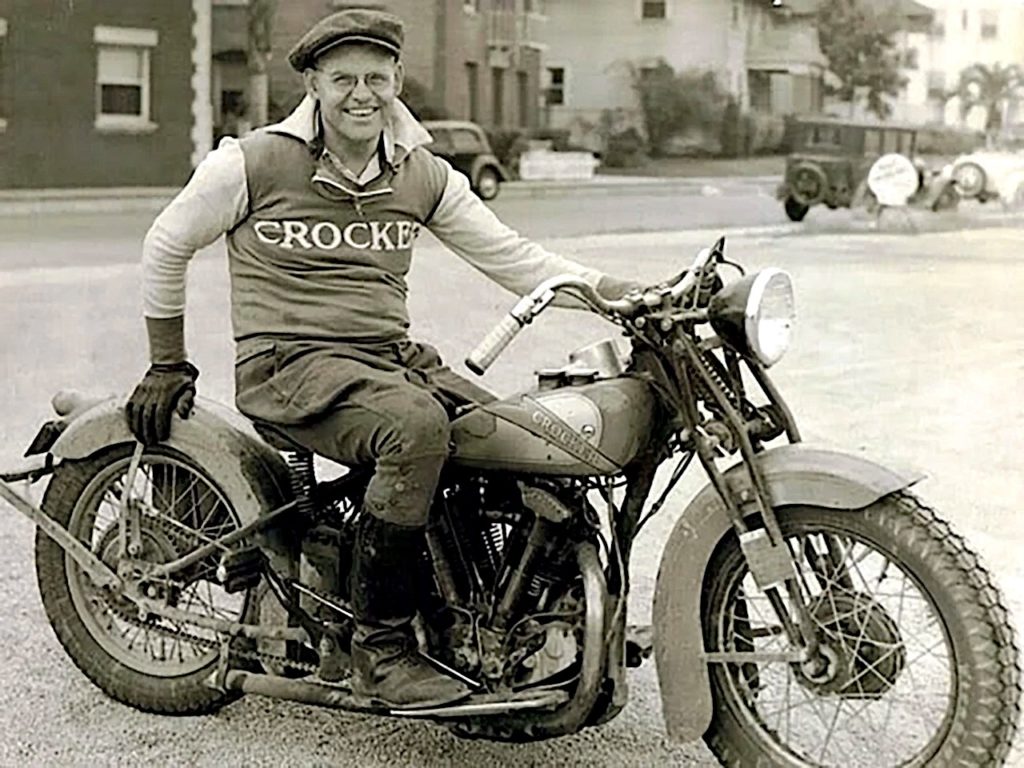
Albert Crocker was a first-rate engineer with years of experience at Thor and Indian motorcycles, and more as an Indian dealer and parts manufacturer. After moving to Los Angeles, where he opened another Indian outlet in 1928, Crocker hired 29-year-old Paul Adleburt Bigsby, a racer and skilled designer/pattern maker, to run the shop.
L.A. in the 1920s was a revolving stage of innovation across the industrial and artistic boards, most prominently in two of Bigsby’s favorite activities: motorcycle racing and music. Between the racetracks and the clubs, “P.A.,” as he was called, would have witnessed the first golden era of American motorcycle racing.
The late 1920s saw the end of the great factory racing teams and the rise of sportsman competition, in which independent privateers could fairly test their riding skills against each other. The traumas of World War I had created a new collective of restless youth eager to hit the road and raise some hell. The staccato rattle of unmuffled Singles and V-Twins echoed across fairground flat tracks, dry lake beds, and hillclimb grades.

Bigsby, a bass player himself, could also regularly sample musical performances of the day. The output was, as they say, roaring, leastways until the Great Depression in 1929, after which both motorcycle racing and popular music shifted to a minor key.
Bigsby was an accomplished rider, winning the Fillmore Reliability Trial in 1927 on a Harley. His proudest achievement came in 1937, when he won the famous Greenhorn Enduro on a Crocker. But by then he had collected enough aches and bruises to quit racing, and, with his brother Carl, started a race-promoting business on the side.
Working with Al Crocker on Indian overhead-valve (OHV) kits fulfilled Bigsby’s creative drive. While the effects of the Depression were still marked, people were back to work and young men itched to go fast. Crocker and Bigsby were pleased to offer them the means with complete machines for road or track or the parts to build their own.
By the mid-1930s, the pair had produced more than two dozen 500cc overhead-valve speedway bikes and finalized the design and plans for the hemi-head 1,000cc Crocker V-Twin. Within five years, Crocker had produced somewhere around 70 V-Twins. (See “Precious Crockers” on page 27.)
The brief era of Crocker handmade bikes, now considered the first factory bobbers, expired in 1942, shuttered by World War II. When the plant was converted to defense work, Bigsby found work as a pattern maker for a company making parts for Navy ships. His daughter, Mary, was born shortly after the war, and would grow to become his trusted assistant, collaborator, and right-hand person in the career that would make him a legend in the music business.

A tinkerer by nature, P.A. was always fiddling with his own guitar and upright bass, looking for ways to improve the action. In 1947, Bigsby built a steel guitar at the request of Joaquin Murphy of Spade Cooley’s band. Soon, other musicians were asking for a pedal steel, and before long he had a waiting list.
Then Merle Travis, a fellow musician and motorcyclist, approached him about building a solid-body electric guitar. Travis wanted an instrument that would sustain notes like a pedal steel, which the hollow-body electrics of the day couldn’t. He reportedly handed Bigsby a sketch and asked if he could make one.
“I can make anything,” P.A. replied, so he crafted a solid-body electric with the six tuning keys on one side of the headstock instead of the typical three pegs on each side. Bigsby’s arrangement became the pattern for subsequent guitars like the Fender Telecaster, Stratocaster, and many others.
“Les Paul, Leo Fender, and Paul Bigsby would hang out together,” reported Andy Babiuk in his book, Paul A. Bigsby, Father of the Modern Electric Solid Body Guitar. “They were actually drinking buddies and would just hang out at Les Paul’s house.” One can only imagine the jam sessions with these veritable guitar legends.
Bigsby had also been experimenting with his own pickups, and his third guitar featured two with adjustable poles. That one went to Ernest Tubb’s guitar player, “Butterball” Paige. Bigsby Guitars, with the help of his daughter, was turning out a few instruments a month, featuring Bigsby’s own pickups with an aluminum housing that reduced the 60-cycle hum dreaded by guitarists.
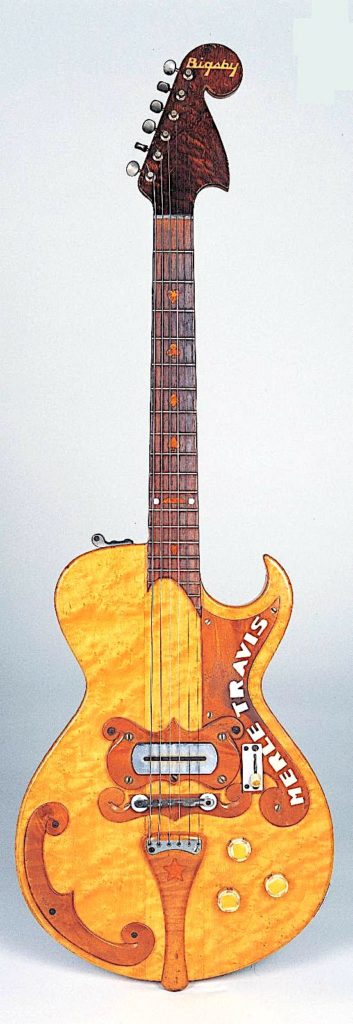
But Bigsby realized that the popularity of his guitars was turning him from a craftsman into a manufacturer. When a well-known country star couldn’t get one quickly, the story goes, he asked Bigsby if he knew who he was dealing with. “I don’t care if you’re Jesus Christ,” P.A. reportedly said, “you will wait your turn like everyone else.”
By the early 1950s, the Bigsby Guitar had been supplanted by the device that firmly established Bigsby’s name in the guitar players’ hall of fame, the True Vibrato Tailpiece. Often called a “whammy bar” or mistakenly a tremolo arm, the gadget bends all strings at once for a distinctive pitch-changing effect.
Merle Travis got the first one, and the bending notes were soon heard across the musical spectrum, from country to rock ’n’ roll. Easily retrofitted to nearly any guitar, the Bigsby tailpiece was on its way around the world. Chet Atkins, Duane Eddy, Jimmy Page, John Lennon, George Harrison, Keith Richards, Joe Walsh … the list goes on.
By 1965, his health failing, Bigsby decided to sell his company to an old friend, Ted McCarty, who was retiring as head of Gibson Guitars, his biggest customer. In 1999, ownership of the name passed to Gretsch Guitars before becoming part of Fender Musical Instruments Corporation.
P.A. Bigsby (1899-1968): A winning motorcycle racer, musician, designer, race promoter, pattern maker, machinist, luthier, and artist. Hell of a life.


